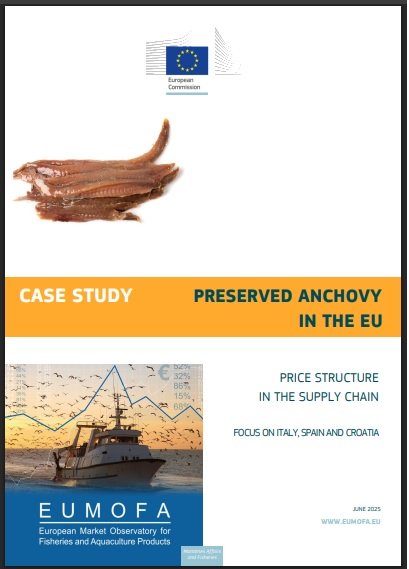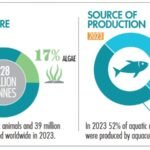Brussels, Belgium.- EUMOFA has recently published the Price Structure Analysis “Fresh mussel in the EU”.
Global production
In 2016, the European Union was the world’s second largest producer (522.000 tonnes) of mussels, surpassed only by China. The EU production has been on a stagnating trend from 2007 to 2016, whereas China has almost doubled its production, reaching 879.000 tonnes. Globally, the production of mussels was on an upward trend and exceeded 2 million tonnes for the first time in 2016. 94% of this production was from aquaculture.
Market structure and price transmission for fresh mussels in Denmark, Germany and Italy
DENMARK
The Danish market is export-oriented. Farmed mussels are sold fresh, while wild mussels are mostly supplied to the processing industry. Domestic consumption is negligible (100 to 200 tonnes/year). In 2018, the average retail price (VAT excluded) of wild fresh mussels in supermarkets was 4,32 EUR/kg. Logistic costs (1,22 EUR/kg) account for almost twice the cost of raw material (0,68 EUR/kg).
GERMANY
Stay Always Informed
Join our communities to instantly receive the most important news, reports, and analysis from the aquaculture industry.
The largest part of the mussels produced in Germany go directly to Yerseke in the Netherlands for cleaning and packaging, whereas most mussels consumed in Germany are imported from Denmark and the Netherlands. In 2016, the German apparent consumption of mussels – all preservation states included – amounted to 12.400 tonnes (live-weight equivalent), 46% of which were sold fresh. The price structure in Germany resembles more closely the one in Denmark than the one in Italy, but with lower logistic costs and a higher price paid to the farmer (in relation with quality).
ITALY
With 120.000 tonnes of apparent consumption, Italy is the largest of the three markets analysed. Just like in Germany, HORECA accounts for a large share of total consumption. The price paid to the farmer (0,70 EUR/kg) is approximately the same as the first-sale price in Denmark (0,68 EUR/kg); the retail price is much lower, though (2,17 EUR/kg, VAT excluded), due to lower transport and processing costs, as mussels are mostly distributed loose in Italy and packaged in Denmark.
Reference (open):
EUMOFA. 2019. Case Study: Fresh Mussel in the EU – Price structure in the supply chain. Focus on Denmark, Germany and Italy. http://www.eumofa.eu/documents/20178/151118/PTAT+Fresh+Mussel_EN.pdf
Editor at the digital magazine AquaHoy. He holds a degree in Aquaculture Biology from the National University of Santa (UNS) and a Master’s degree in Science and Innovation Management from the Polytechnic University of Valencia, with postgraduate diplomas in Business Innovation and Innovation Management. He possesses extensive experience in the aquaculture and fisheries sector, having led the Fisheries Innovation Unit of the National Program for Innovation in Fisheries and Aquaculture (PNIPA). He has served as a senior consultant in technology watch, an innovation project formulator and advisor, and a lecturer at UNS. He is a member of the Peruvian College of Biologists and was recognized by the World Aquaculture Society (WAS) in 2016 for his contribution to aquaculture.



